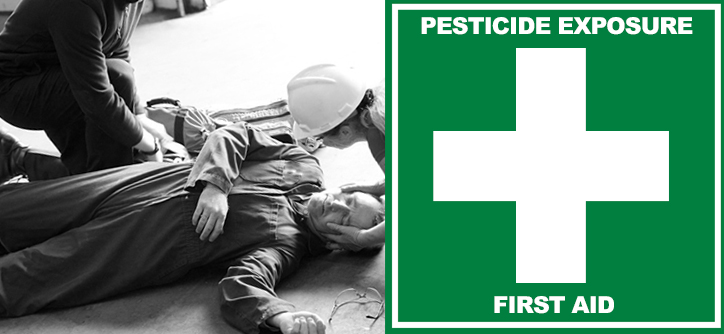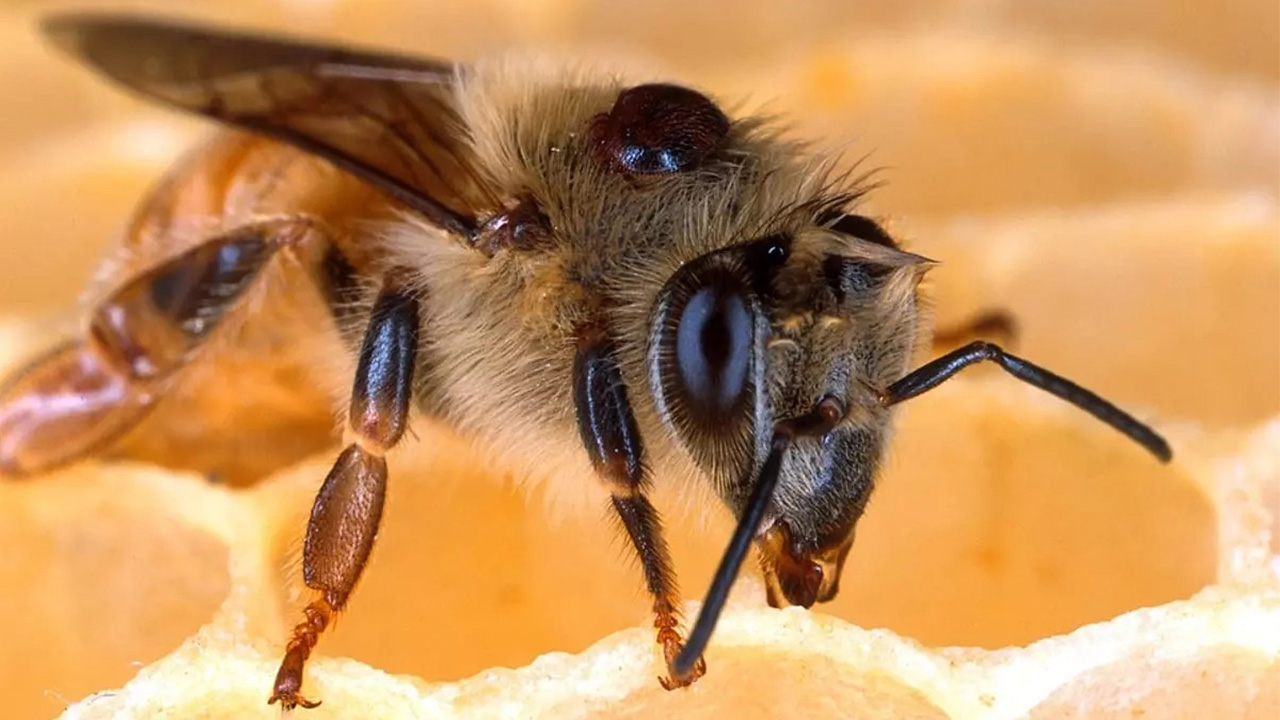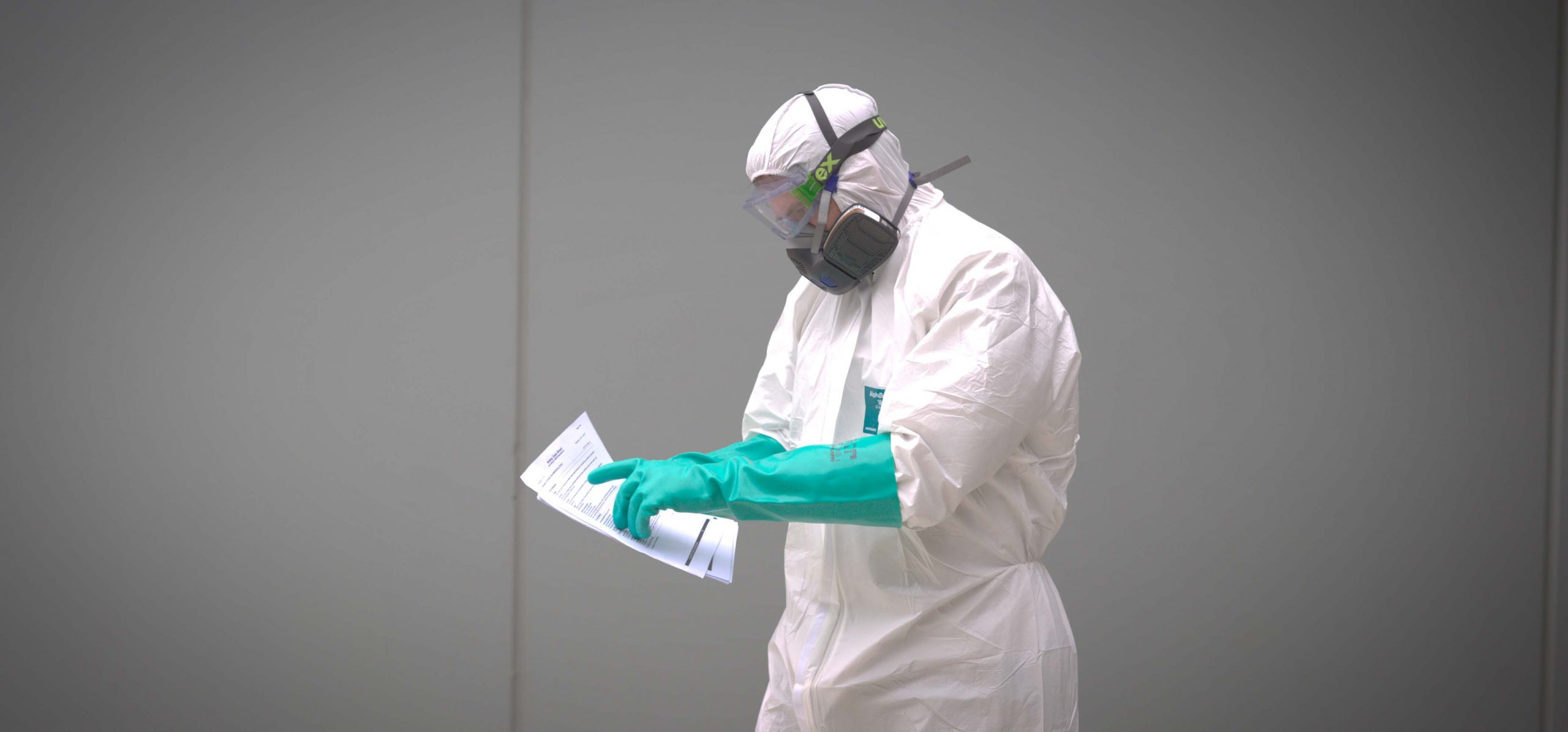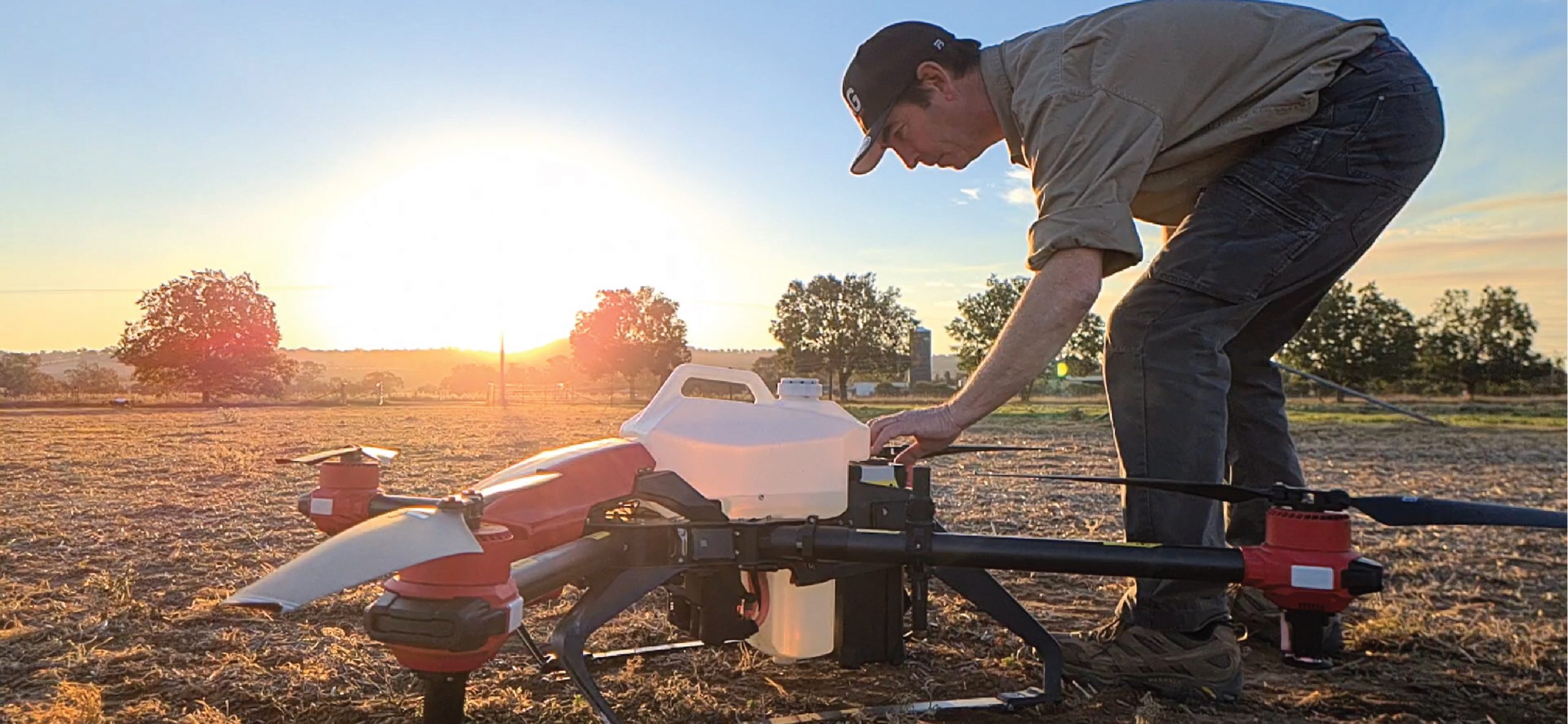The best safety expression any workplace can have, which uses pesticides and highly values worker health and safety, is that of “Prevention is better than Cure.”
In a study commissioned by National Safety Council of Australia (NCSA) and Ansell on trends in safety performance, it was found that leading indicators (especially near misses) were more effective in developing injury prevention strategies than lagging indicators (injuries/fatalities). Therefore, a great starting point is fostering the right culture in your workplace with a key focus on recording and analyzing near misses/accidents and carrying out in-depth risk assessments for all hazardous chemicals used.
However even with the best of efforts and procedures; accidents happen and therefore appropriate planning, training and first aid procedures are crucial for successful outcomes in the event of poisoning through contact with pesticides.
A good starting point and workplace initiative is to foster a sound knowledge of the signs and symptoms of chemical poisoning, and so post the chart below for all staff to access. For specific first aid relative to a poisoning where the product used is known, refer to the products safety data sheet.
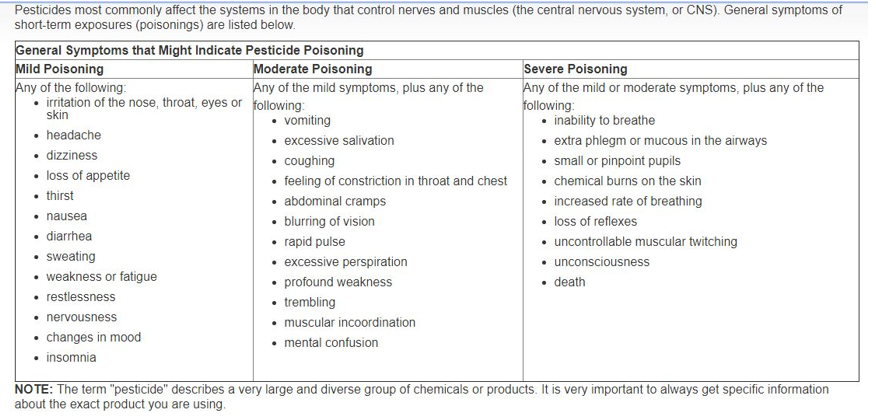 Source: http://www.ccohs.ca/oshanswers/chemicals/pesticides/firstaid.html
Source: http://www.ccohs.ca/oshanswers/chemicals/pesticides/firstaid.html
First Aid Procedure for Acute Pesticide Poisoning
If you are trained in first aid you will be able to assess the situation and may be able to do the following:
- See if the victim is breathing, if not, administer artificial respiration (CPR), ensuring you are not contaminated.
- Decontaminate the victim immediately by washing thoroughly. Speed is essential.
- Call the ambulance (phone 000) or the closest hospital.
However, if you are not trained in first aid the best course of action would be to follow the label/SDS first aid instructions and contact the emergency services as soon as possible.
If more than one person is available to help the victim, do the following:
- One person should check that the victim is breathing. If not, give artificial respiration then begin washing the victim.
- Another person should call the hospital or doctor immediately, then assist with the decontamination of the victim.
- Ambulance officers will need information from the label and/or MSDS i.e. active ingredients, UN number etc.
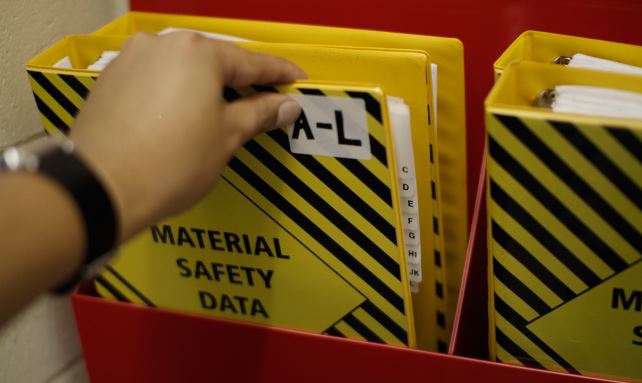
If the chemical has been spilled on the skin or clothing:
- Remove the clothing immediately if it is contaminated and thoroughly wash the skin with soap and water. Avoid harsh scrubbing as this enhances chemical absorption.
- Rinse the affected area with water, wash again and rinse.
- Gently dry the affected area and wrap in a loose cloth or a blanket if necessary
If there are chemical burns of the skin:
- If there are chemical burns of the skin, cover the area loosely with a clean, soft cloth.
- Avoid the use of ointments, greases, powders and other medications unless instructed by a medical authority.
If the chemical has been inhaled:
- Get the victim to fresh air immediately; carry the victim (don’t let the victim walk)
- Have the victim lie down and loosen clothing
- Keep the victim warm and quiet
- If the victim is convulsing, watch the breathing and protect the victim’s head
- If breathing stops or is irregular, give artificial respiration.
Do not attempt to rescue someone who is in a closed, contaminated area unless you are wearing appropriate protective equipment.
If the chemical has entered the eye:
- Hold the eyelid open and immediately begin gently washing the eye with cool to warm clean running water
- Do not use chemicals or drugs in the wash water unless instructed by a doctor or the Poisons Information Centre.
- Continue washing for 15-20 minutes
- Avoid contamination of the other eye if only one eye is involved
- Flush under the eyelids with water to remove debris
- Cover the eye with a clean piece of cloth and seek medical attention immediately.
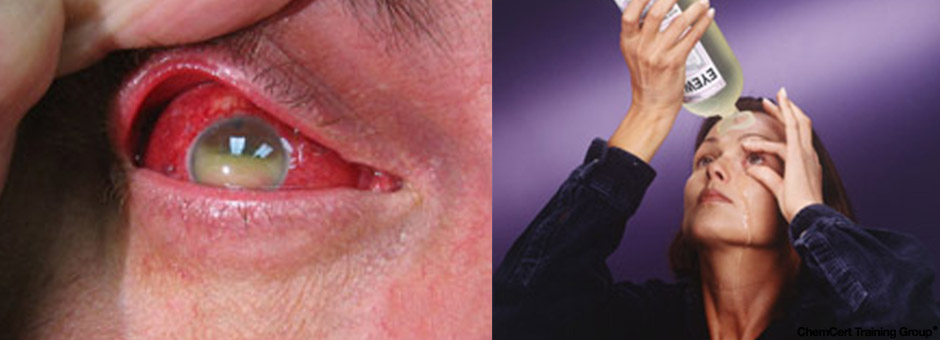
If the chemical has been accidentally injected:
Treat the puncture wound to control any bleeding and prevent infection. Seek medical advice as some animal health vaccines such as Gudair contain mineral oils which can cause severe irritation, pain and swelling for many months.
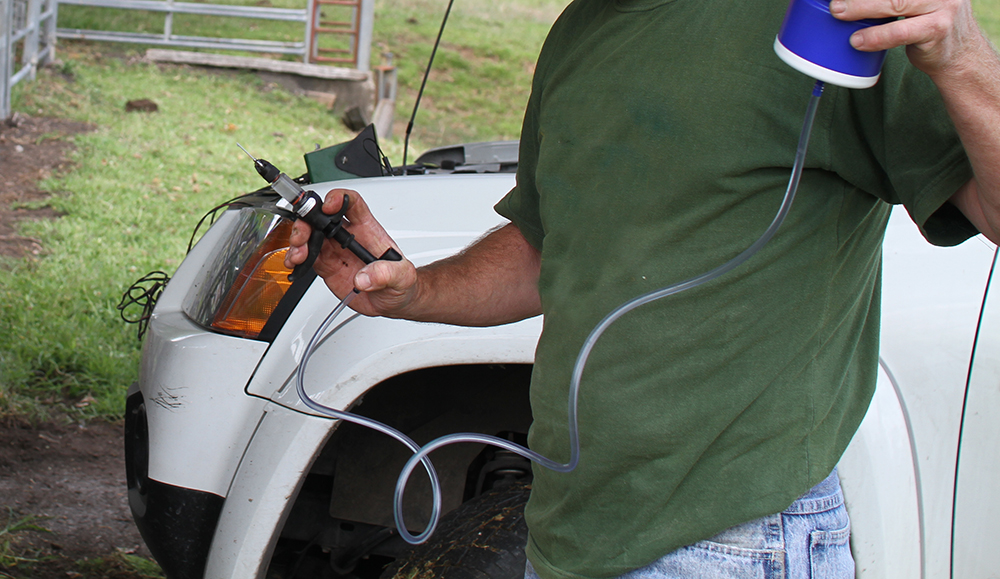
If the chemical has been swallowed:
- DO NOT INDUCE VOMITING
- Contact the Poisons Information Centre (Ph 13 11 26)
- Always Read the Label/SDS
- Get the victim to a doctor or hospital as soon as possible and take the SDS with you.
Note: Some old labels specify the use of Ipecac syrup to induce vomiting. This practice is no longer recommended. If in doubt, contact the Poisons Information Centre.
Workplace Safety Equipment
In terms of equipment, workplaces that use pesticides that are hazardous should have an eye wash station, emergency shower, well stocked first aid kit and suitable PPE for the pesticides kept, such as nitrile gloves and respirator suitable for pesticides held in case of ongoing inhalation risk. Do remember that entry into confined spaces requires appropriately trained personnel with supplied air breathing apparatus.
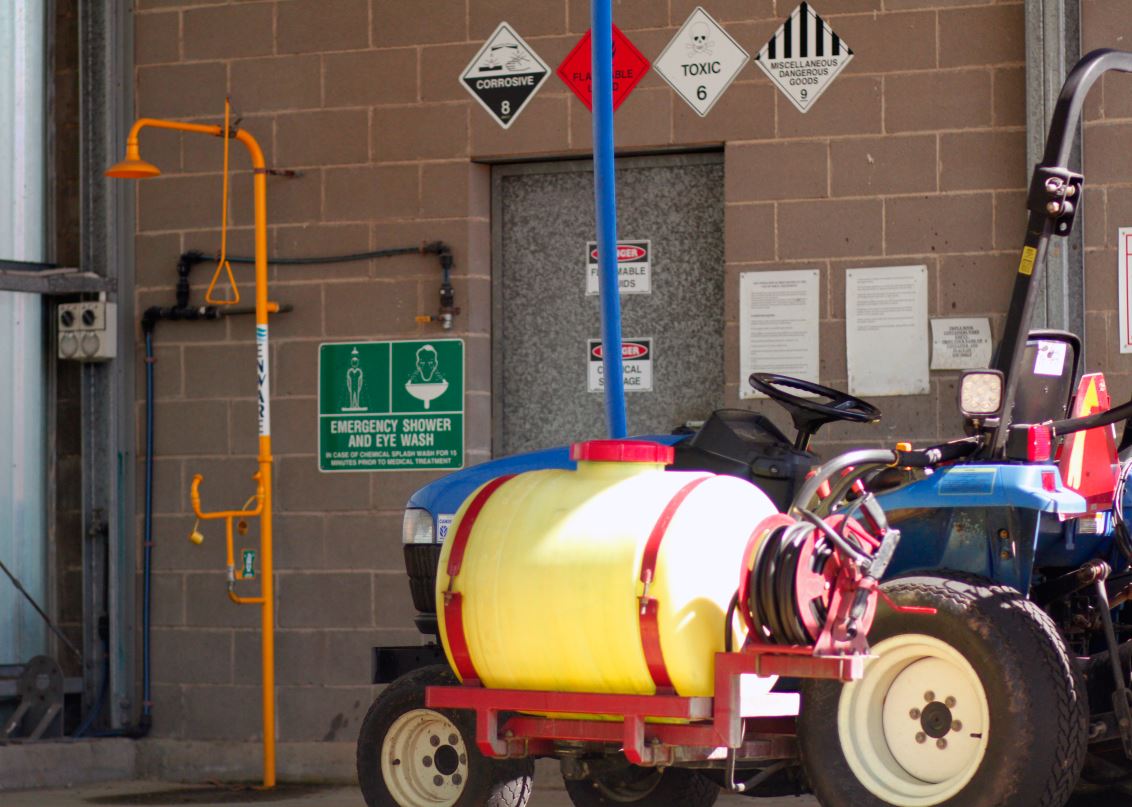
In summary, remember the old saying, fail to plan and plan to fail. However, by having an appropriate first aid procedure in place, staff trained in first aid, the appropriate equipment and a folder of the current safety data sheets for products held and used, emergency first responders can generate the best outcomes for those poisoned with hazardous chemicals.

